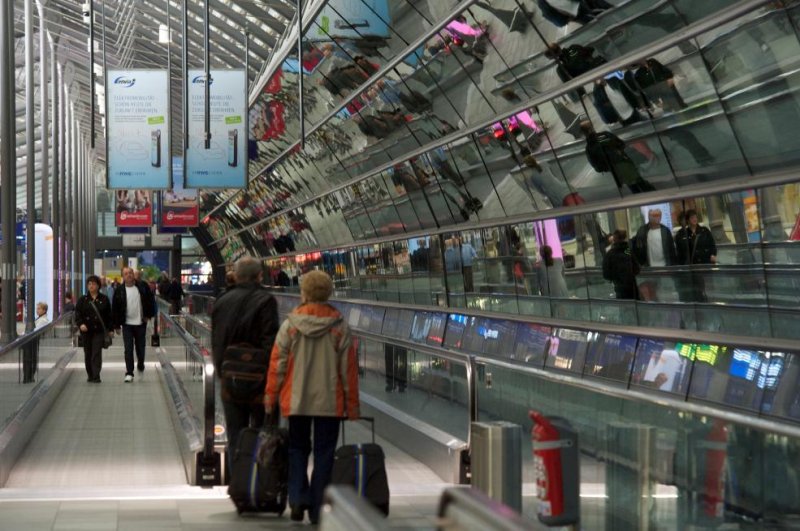Could a system of moving walkways move pedestrians throughout an urban center? Scientists consider their potential. Photo by Peter Endig/European Pressphoto Agency
LAUSANNE, Switzerland, Nov. 23 (UPI) -- Scientists in Switzerland are considering the future of the city, specifically a metropolis without cars. Without vehicles, how will people move quickly and efficiently throughout an urban center?
One seemingly fanciful option is the moving walkway. In a new study, researchers at the Swiss Federal Institute of Technology in Lausanne, or EPFL, considered the potential of moving walkways in the 21st century city, and how they might mix with more traditional forms of eco-friendly transport.
According to EPFL scientists, their analysis revealed promising potential.
Accelerating walkways can move people at speeds upwards of 10 miles per hour -- "...around the average speed at which people travel through most large cities during rush hour," lead study author Riccardo Scarinci said in a news release.
Using the city of Geneva as a model, Scarinci and his colleagues considered how the walkways would fit into existing road networks, where entry and exit points would be best situated. They calculated energy demands and budget constraints, as well as other logistical problems like which combinations of speed, acceleration, length and width would work best.
As researchers explained in their paper, published this week in the European Journal of Transport and Infrastructure Research, moving walkways offer two main advantages: size and carrying capacity. They're much narrower than roads, leaving room for other types of transport -- bikes, buses, trams -- and they can carry as many as 7,000 passengers per hour.
Currently, the major roadblock -- as is often the case with infrastructure investment -- is cost. Installing one moving walkway line would cost the same as installing a new tram line. But scientists suggest walkways would be less expensive if installed on a grand scale, which is why researchers suggest they only be considered in extremely dense cities.
"We have not come up with a turnkey solution," concluded Michel Bierlaire, the director of the Transport and Mobility Laboratory. "But this study proves that the concept is credible and that a car-less, pedestrian-centric city is conceivable. This is a useful starting point for urban planners to evaluate the feasibility of accelerating moving walkways."















